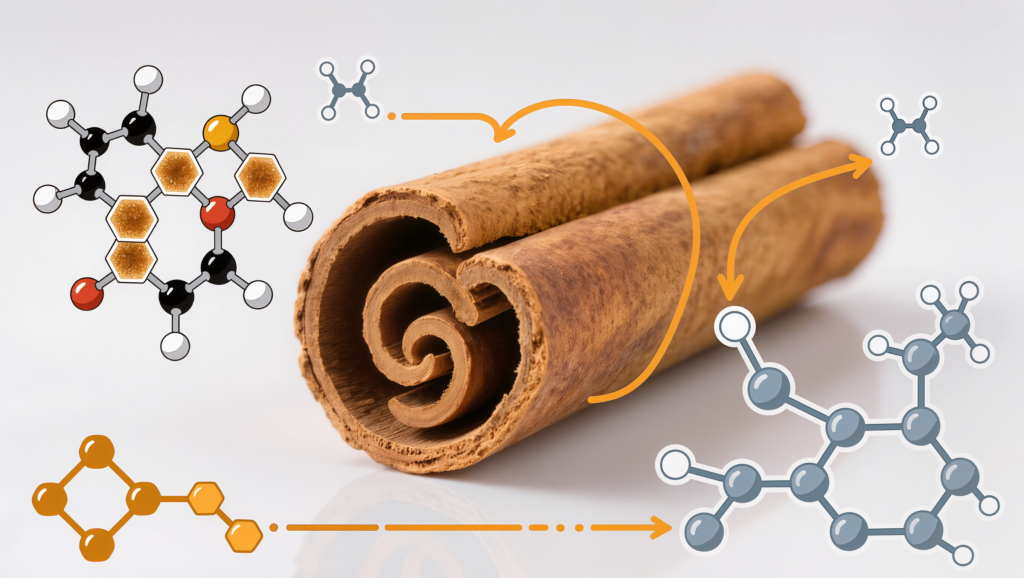If you think cinnamon is just for apple pie, think again: this powerhouse organic spice is turning heads in medical science for its remarkable ability to help fight insulin resistance—a silent metabolic disruptor driving type 2 diabetes, obesity, and other chronic conditions. While many spices can nudge blood sugar in the right direction, cinnamon stands above the rest for its evidence-backed potential to improve insulin sensitivity, naturally.
Cinnamon: The Secret Metabolic Weapon in Your Spice Rack
Cinnamon isn’t exotic or hard to find. It’s likely sitting in your pantry right now, but when sourced organically, it also comes without the risk of pesticide residues and questionable additives. Both Ceylon (“true” cinnamon) and Cassia varieties have been used for centuries in folk medicine to combat sugar spikes and metabolic sluggishness.
What Is Insulin Resistance, and Why Is It a Problem?
Insulin resistance is a state where cells in your body stop responding efficiently to insulin, the hormone responsible for ferrying glucose from your bloodstream into cells where it’s used for energy. This slow resistance builds up over time due to poor diet, inactivity, stress, and even pollution—resulting in excess blood sugar, fat storage, and eventually, increased risk of diabetes, heart disease, and other chronic issues.
Common symptoms include fatigue after meals, stubborn belly fat, sugar cravings, and trouble losing weight.
How Cinnamon Fights Insulin Resistance
The Science Behind the Spice
Clinical studies have shown that cinnamon extract can lower fasting glucose by improving how cells respond to insulin. For example, an 8-week study demonstrated that taking 1g/day of a standardized cinnamon extract (Cinnulin PF) led to significant reductions in fasting glucose and improved measures of insulin resistance—about a 21% increase in insulin sensitivity based on Matsuda’s index. Similar results have been replicated in women with PCOS and other insulin-resistant populations.
Mechanisms at Work
Research points to several bioactive compounds in cinnamon, such as cinnamaldehyde and polyphenols, that:
- Mimic insulin activity, improving glucose uptake into muscle and fat cells.
- Boost the activity of insulin receptors, making them more responsive.
- Slow carbohydrate breakdown in the gut, resulting in gentler blood sugar rises after meals.
- Reduce chronic inflammation and oxidative stress—two major accelerants of insulin resistance.
Animal studies have even shown cinnamon extracts improve insulin sensitivity and lower triglycerides, enhancing metabolic health on a cellular level.
Cinnamon vs. Other Spices: Is It Really the Champ?
While turmeric, ginger, fenugreek, and others also show promise for improving insulin sensitivity, cinnamon stands out for the sheer volume and quality of research supporting its effect. Reviews find that both Cassia and Ceylon cinnamon varieties can help control blood sugar, lower fasting glucose, and support metabolic health—often at doses as low as 1/2 to 1 teaspoon per day.
Let’s see how cinnamon compares:
| Spice | Key Compound(s) | Effect on Insulin Resistance | Notable Research |
|---|---|---|---|
| Cinnamon | Cinnamaldehyde, polyphenols | Reduces insulin resistance, lowers fasting glucose, mimics insulin | Extensive human and animal studies |
| Turmeric | Curcumin | Anti-inflammatory, improves insulin sensitivity | Promising, but mostly animal and cell study |
| Fenugreek | Saponins | Slows sugar absorption, gentle effect | Modest data |
| Ginger | Gingerol | Reduces inflammation, helps blood sugar | Positive, some human trials |
| Coriander | Coriandrin | Mild blood sugar control, antioxidant | Mainly animal/cell studies |
Daily Cinnamon: How Much and How Safe?
For most adults, 1/2 to 1 teaspoon of organic cinnamon per day, sprinkled into oatmeal, smoothies, or savory dishes, may help promote better insulin sensitivity. Higher doses should be discussed with a health professional, especially since conventional Cassia cinnamon contains coumarin—a compound that can burden the liver in excess (Ceylon cinnamon is much safer for larger doses).
Organic cinnamon is the preferred choice: it’s free from unwanted pesticides or contaminants often found in non-organic bulk powders, and carries a deeper, more complex flavor.
Easy Ways to Get More Cinnamon in Real Food
- Stir cinnamon into your morning oats or yogurt.
- Blend into smoothies with banana, flax, and almond milk.
- Add a pinch to curries and stews for an earthy undertone.
- Bake into whole grain muffins, pancakes, or healthy treats.
- Brew cinnamon tea or infuse into coffee for a metabolic boost.
Combining Cinnamon with Other Lifestyle Tweaks
Cinnamon doesn’t act alone: pair it with a fiber-rich diet, lean proteins, regular movement, and stress management to dramatically decrease your risk for insulin resistance. Combining cinnamon with other anti-inflammatory spices (turmeric, ginger) can yield even greater metabolic benefits.
What Do Experts and Dietitians Say?
Registered dietitians affirm that cinnamon is among the most researched spices for metabolic health, with consistent findings across cultures and continents. It’s regularly recommended as a “first line” herbal approach for those looking to support blood sugar naturally, provided overall diet and lifestyle are also optimized.
The Bottom Line: Cinnamon’s Metabolic Mastery
Forget the idea that organic cinnamon is only good for flavor—science suggests its compounds may help fight insulin resistance, improve blood sugar control, and reduce the risk of diabetes when enjoyed regularly in food-form doses. While not a silver bullet, it’s a potent, affordable tool for metabolic health sitting right in your spice cabinet.
Next time you reach for a sweet or savory sprinkle, remember: organic cinnamon is much more than a flavor booster—it’s a science-backed secret to better metabolic health and a simple way to fight insulin resistance every day








